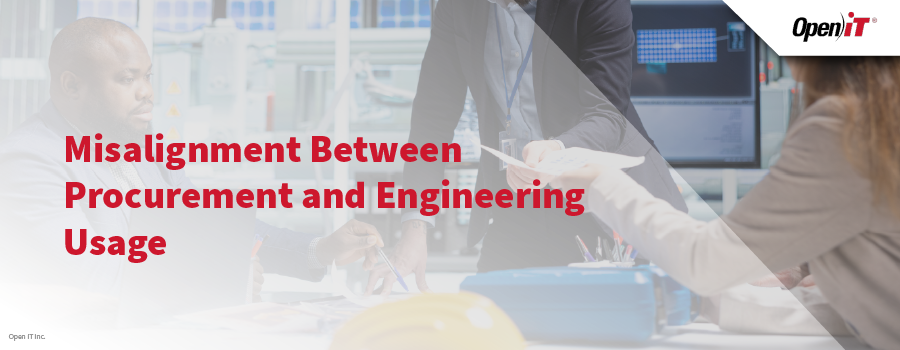Software compliance risks often remain invisible until audits, investigations, or operational disruptions bring them to light—by then, remediation is both costly and disruptive.
In highly regulated industries such as aerospace, defense, automotive, and energy, software license compliance is not only a legal obligation but also a safeguard against financial, operational, and reputational damage. Despite mature software asset management (SAM) practices and advanced monitoring tools, organizations continue to face hidden risks that undermine compliance strategies.
These silent risks include incomplete visibility across hybrid environments, audit trail gaps, overreliance on vendor-supplied reports, misalignment between procurement and engineering usage, untracked indirect access, unmanaged license borrowing, and insufficient integration with governance and security controls. Left unmanaged, each of these issues can escalate into costly penalties, project delays, or audit failures.
DEMO: Struggling with invisible compliance risks?
The Cost of Software Non-Compliance
Software non-compliance can result in losses of up to $500,000 in audit-related penalties, often triggered by overlooked or poorly tracked license usage. Beyond direct fines, enterprises face legal costs, reputational damage, and project delays when compliance failures disrupt access to critical engineering applications.
According to PwC, 64% of executives believe compliance should provide better visibility into risks, while 53% expect faster identification and proactive response. Yet fragmented monitoring and overreliance on vendor reports leave most organizations without the end-to-end visibility needed to prevent risks from escalating into costly violations.
Risk #1: Incomplete Visibility Across Hybrid Environments
As organizations transition to hybrid infrastructures, many maintain a mix of on-premises license servers, cloud-hosted applications, and vendor-managed subscription platforms. Without centralized visibility, compliance managers cannot validate that license consumption aligns with entitlements. Shadow IT across containerized environments or virtualized workstations often escapes standard reporting tools.
Failure to consolidate these data points undermines software compliance, creating exposure during vendor audits. A fragmented view also increases the risk of over- or under-licensing, leading to unnecessary costs or potential penalties. Solutions like Open iT provide unified visibility by collecting granular usage data from multiple license managers and SaaS portals, enabling a defensible compliance posture.
Risk #2: Audit Trail Gaps and Data Integrity Issues
Many enterprises underestimate the importance of audit trail integrity in software license compliance. Log retention policies, system time mismatches, or gaps in license server records can compromise the ability to demonstrate compliant use during a vendor inspection. Even short interruptions in license usage data can be interpreted as non-compliance if not explained with supporting evidence.
A robust compliance strategy must include secure collection, normalization, and long-term retention of license usage data. This ensures that organizations can not only defend against audit claims but also validate internal consumption trends for strategic planning.
Risk #3: Overreliance on Vendor-Supplied Reports
Relying exclusively on vendor-supplied dashboards or license reports introduces a blind spot in compliance management. Vendor tools are optimized to detect potential overuse but rarely highlight inefficiencies or underutilization. This bias skews compliance validation in the vendor’s favor and limits an enterprise’s ability to conduct independent verification.
By augmenting vendor reports with third-party monitoring solutions, enterprises can cross-check entitlements against actual usage. Independent visibility not only strengthens license compliance but also equips procurement and IT teams with the evidence required to challenge incorrect vendor claims.
Risk #4: Misalignment Between Procurement and Engineering Usage

Procurement teams often negotiate license bundles based on estimated demand, while engineering teams operate with fluctuating, project-driven usage patterns. This misalignment results in either over-purchasing, which wastes capital, or under-provisioning, which risks denials and work disruptions.
When usage patterns are not continuously analyzed, organizations risk drifting out of software compliance by reallocating licenses informally or failing to enforce proper access policies. Advanced analytics, such as those provided by Open iT, bridge the gap by aligning engineering consumption data with procurement strategy, ensuring both efficiency and compliance.
Risk #5: Untracked Indirect Usage in Distributed Teams
In modern digital engineering environments, indirect access is common. Scripts, batch jobs, and automated processes may invoke license-dependent software without direct user interaction. Additionally, distributed project teams often share credentials or access nodes without consistent monitoring.
If indirect or shared usage is not tracked, enterprises may inadvertently exceed entitlements, breaching license compliance requirements. Worse, these violations often remain invisible until uncovered during a vendor audit. To mitigate this, compliance strategies must extend beyond user-to-license mapping and incorporate workload-level tracking.
Risk #6: Short-Term Project Spikes and “License Borrowing”
Short-duration engineering projects often require temporary increases in software consumption. Teams may borrow licenses for offline use or exploit license timeout settings, unintentionally creating periods of overuse. While seemingly minor, repeated incidents of unmanaged borrowing can accumulate into significant compliance violations.
Software compliance frameworks must include policies for managing temporary spikes, particularly when supporting contractors, offshore teams, or time-sensitive R&D projects. Advanced monitoring allows IT to differentiate between legitimate project-driven demand and systemic overuse, reducing the likelihood of compliance breaches.
Risk #7: Insufficient Integration with Security and Governance Controls
Compliance risks do not exist in isolation. When software license compliance is siloed from security, identity management, and governance frameworks, organizations face compounded risks. For example, orphaned accounts with lingering license access not only violate compliance but also expose the enterprise to security vulnerabilities.
A mature compliance strategy integrates license management with directory services, role-based access controls, and governance frameworks such as NIST or ISO standards. This holistic approach ensures that compliance is sustained alongside broader IT risk management.
Closing the Gaps with Data-Driven Compliance
The cost of overlooking these silent risks is significant: financial penalties from vendor audits, operational delays from license denials, and reputational damage from non-compliance findings.
Enterprises must evolve from reactive compliance checks to proactive, data-driven compliance strategies. By implementing solutions like Open iT, organizations gain:
- Comprehensive monitoring across hybrid infrastructures
- Reliable audit trails with normalized, long-term usage data
- Independent verification beyond vendor-supplied reports
- Alignment of procurement strategies with real engineering usage
- Advanced tracking of indirect, shared, and borrowed usage
- Integration of license compliance with broader governance frameworks
In highly regulated and innovation-driven industries such as aerospace, automotive, and energy, the ability to demonstrate continuous compliance is as critical as ensuring operational efficiency. With a robust, analytics-driven approach, organizations can close hidden gaps, reduce audit exposure, and optimize their license portfolios.
Software compliance is too critical to leave to chance. Contact Open iT today to gain full control over your engineering software licenses.
See how Open iT ensures audit-proof oversight.






